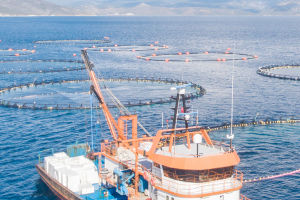In the realm of extreme sports, paragliding and skydiving stand out as highly anticipated activities, each boasting its unique allure and set of risks.
While both involve soaring through the skies, there exist significant disparities in practice and technology between the two.
1. Weather Conditions and Seasonality:
Weather plays a pivotal role in both paragliding and skydiving, with similar prerequisites for favorable conditions:
1. Activities cannot be conducted during rainfall.
2. Excessive fog obstructing ground visibility is prohibitive.
3. High winds pose a safety risk.
However, paragliding imposes stricter weather constraints compared to skydiving. Paragliders launch against the wind from fixed mountain points, necessitating precise wind direction. Additionally, paragliding sites observe distinct seasons owing to prevailing wind patterns.
Conversely, skydiving is less reliant on wind direction but remains susceptible to adverse weather conditions, including rain and reduced visibility due to thick clouds.
2. Takeoff Methods:
Paragliders initiate their flights from hillsides, utilizing elevations that vary in altitude. Lift generated by the wind facilitates the ascent, allowing for maneuvers such as soaring and gliding.
Conversely, skydivers ascend by aircraft or hot air balloons before leaping into the sky and deploying their parachutes at designated altitudes.
3. Flight Experience:
Paragliding affords participants the experience of free flight, utilizing wings to navigate from takeoff to landing. In contrast, skydivers initially engage in freefall maneuvers before transitioning to parachute descent upon chute deployment.
4. Direction of Flight:
Paragliders harness dynamic airflow along ridges or exploit thermals to ascend vertically and traverse horizontally. Adequate altitude is imperative for executing maneuvers and embarking on cross-country flights. Conversely, skydivers focus on safe vertical descent without horizontal flight capabilities.
5. Harness Design:
Paragliding harnesses resemble armchairs, providing comfort during flight except during takeoff and landing. In contrast, skydiving harnesses resemble full-body climbing gear, prioritizing safety and functionality over comfort.
6. Trick Performance:
Paragliders can execute ground maneuvers and aerial tricks using their wings, ranging from basic pitching and swinging for novices to intricate stunts for skilled pilots. Conversely, skydivers perform mid-air maneuvers using their bodies, including various tricks and formations when jumping with others.
7. Choosing Between Paragliding and Skydiving:
Deciding between paragliding and skydiving hinges on personal preferences and interests. Skydiving appeals to adrenaline enthusiasts seeking the thrill of freefall and high-speed maneuvers.
On the other hand, paragliding caters to those desiring leisurely flights amidst scenic landscapes or embarking on extended exploratory journeys.
Moreover, paragliding often proves more cost-effective than skydiving, making it a viable starting point for beginners. Additionally, mastering paragliding skills can facilitate smoother transitions into skydiving.
In conclusion, both paragliding and skydiving offer exhilarating experiences and challenges, each catering to diverse tastes within the realm of aerial sports. However, before participation, it's imperative to undergo professional training and comprehend the associated risks to ensure safe and enjoyable flights.


